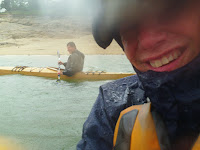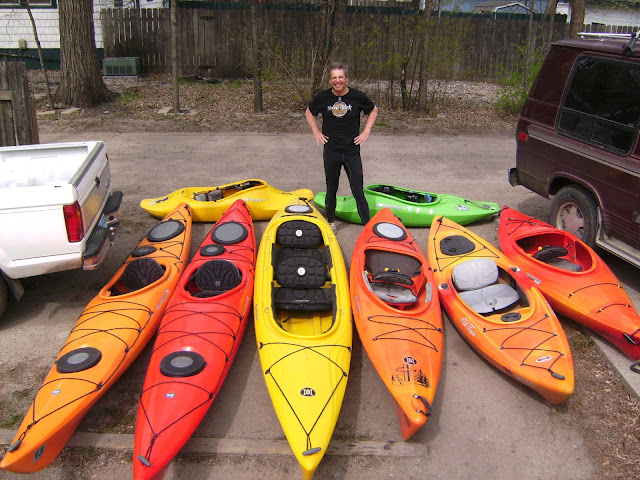Joys come from simple and natural things: mists over meadows, sunlight on leaves, the path of the moon over water. -- Sigurd F. Olson
The two best reasons to ever buy a kayak rather than just renting one are for the stunning sunsets and splendid sunrises. Those first and last hours of sunlight, that photographers refer to as the "Golden Hour" creates a magnificent mood across the water as the sun slips behind the horizon or climbs steadily into the sky while gliding silently across the lake soaking in twilight’s peaceful enchantment.
"It's one of my favorite activities," wrote Canadian paddler Harvey Chris Wittenberg, "Nothing better than glassy conditions during a full moon, when natural illumination is greatest. The only sounds you hear are the surf or your paddle breaking the water. A very serene "zen-like" moment."
Night paddling is not the time to explore new places. As the light fades as the world transforms into a silver a black panorama and keeping track of your bearings in the dark can be hard to correct. Distances are harder to determine and landmarks can be difficult to see. Wittenberg recommends, to scout out your route ahead of time and leave glow stick on a rock or tree at your launch point to help you find your way back in the pitch black.
"I've had a few times where it was not easy to find my launch point," writes Wittenberg, "Make sure if it is a new area to check it out during daylight first and leave a float plan along with an expected time you'll come back with a loved one,"
While calm inland lakes and protected sea bays usually work the best for a moonlight paddling trip. If choosing a river, it should be free of snags and rapids with a take-out point easy to spot in low light conditions unless you plan to paddle back against the current to your original access point.
For coastal tours, be aware of any changes in the weather that might make any part paddle more hazardous in wind, waves, and tide. Also, stay out of commercial shipping lanes. If available, try using GPS mapping to help you identify your location at night.
Consult the U.S Coast Guard's Navigation Rules and have on hand sounding devices, like a whistle or air horn, and some sort of telecommunication device, like a VHF radio or cell phone in a waterproof case and an emergency beacon to alert others who might be far away. Insect repellent and a jacket for cool weather are always a good idea and always wear your PFD.
Also, you can wear a bright LED headlamp and carry a reserve flashlight. If another watercraft approaches, you can turn your headlamp in that direction to alert other boats to your presence, but keep it off when kayaking or use the red light option to ensure the best view of the illuminating moon.
"It's good to carry a small light on the back of your PFD along with a headlamp," wrote Wittenberg, "I have fluorescent stickers on front and back of my kayak as well as on paddle because the paddle is the highest thing people will see. The best fluorescent stickers are the red and white ones you can get at a Marine store that work in sunlight and darkness, to put on either side of your kayak. Purchase a cheap green glow stick (for the front of the kayak) and a red one for the back."
What to go...Check with your outfitter or local state park to see if they offer any moonlit paddle nights. Across the country, many of them provide guided sunset and full moon paddling sessions and with all the gear for a reasonable price. Northern California's Current Adventures has been taking paddlers of all skill levels on their popular moonlit kayaking excursion on Lake Natoma and Lake Jenkinson at Sly Park Recreation Area near Sacramento.

















